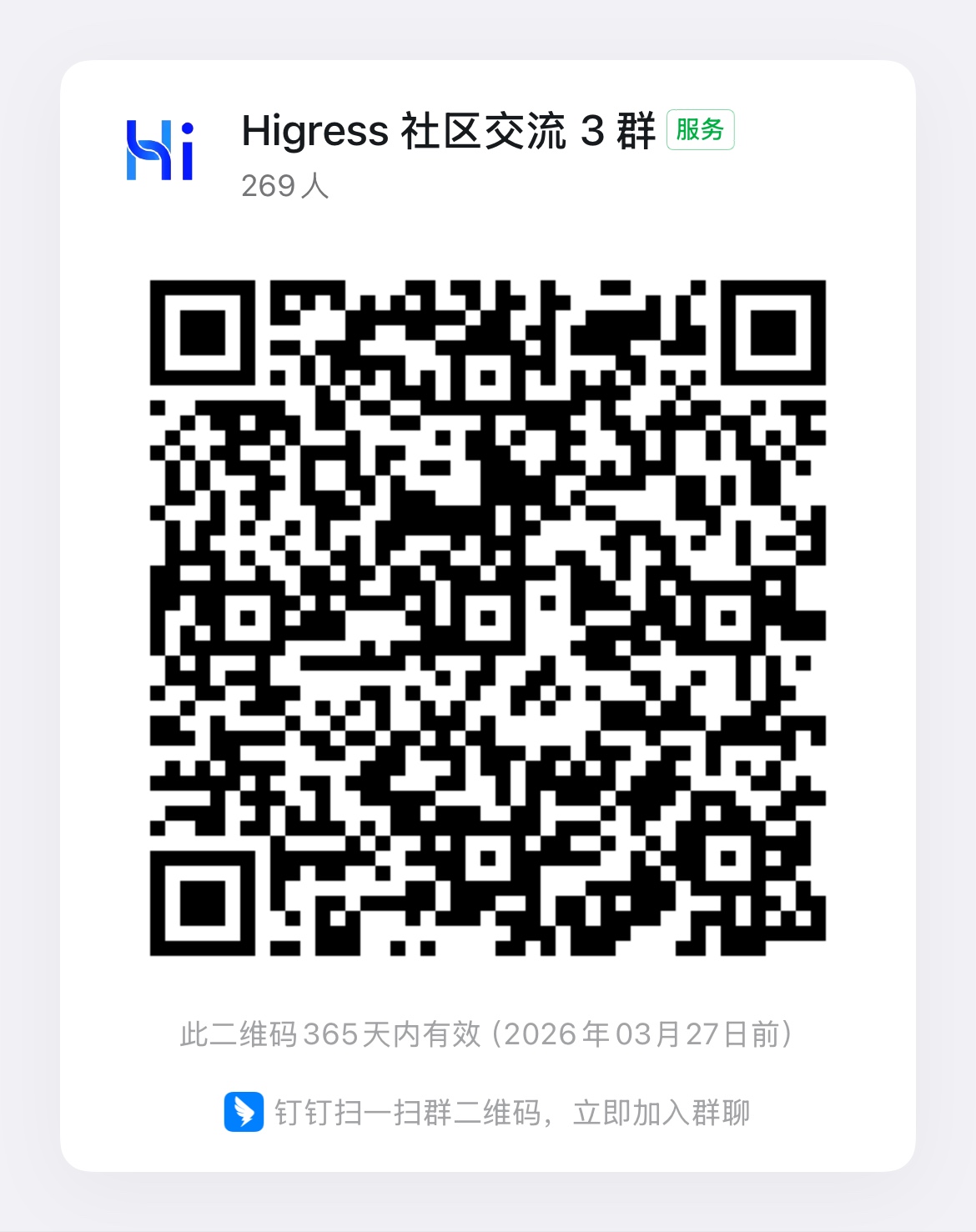Plugin Usage Guide
Configuration through the Higress Console
The Higress console provides 3 entry points for plugin configuration:
- Global configuration: Plugin Market -> Select plugin to configure
- Domain-level configuration: Domain Management -> Select domain -> Click Policies -> Select plugin to configure
- Route-level configuration: Route Configuration -> Select route -> Click Policies -> Select plugin to configure
The priority order of these three configurations is: Route-level > Domain-level > Global
This means that global configurations only take effect for requests that don’t match any specific route or domain.
For general plugins, including custom plugins, the route/domain-level configuration fields are identical to the global configuration fields.
For authentication plugins (Key Auth, HMAC Auth, Basic Auth, JWT Auth, etc.), the approach is different. Global configuration only handles Consumer credential configuration and whether to enable global authentication, while at the route/domain level, the allow field configures the list of Consumers permitted to access. For details, please refer to the Key Authentication configuration guide.
Configuration via Higress WasmPlugin CRD
The Higress WasmPlugin CRD extends the Istio WasmPlugin CRD, adding the following configuration fields:
| Field Name | Data Type | Filling Requirements | Description |
|---|---|---|---|
defaultConfig | object | Optional | The default configuration of the plugin, which takes effect globally for requests that do not match specific domain names and routing configurations |
matchRules | array of object | Optional | Configurations that match domain names or routes to take effect |
Description of configuration fields for each item in matchRules:
| Field Name | Data Type | Filling Requirements | Configuration Example | Description |
|---|---|---|---|---|
ingress | array of string | One of ingress and domain is required | [“default/foo”,“default/bar”] | Matching ingress resource object, the matching format is: namespace/ingress name |
domain | array of string | One of ingress and domain is required | [“example.com”,“*.test.com”] | Match domain name, supports wildcard domains |
config | object | Optional | - | Plugin configuration that takes effect after matching |
Take the Request Blocking plugin as an example, if you want the following configuration of the plugin to take effect globally (please refer to the Request Blocking document for configuration field descriptions):
block_urls:- swagger.html- foo=barcase_sensitive: falseThen the corresponding WasmPlugin needs to be configured as follows:
apiVersion: extensions.higress.io/v1alpha1kind: WasmPluginmetadata: name: request-block namespace: higress-systemspec: defaultConfig: block_urls: - swagger.html - foo=bar case_sensitive: false url: oci://higress-registry.cn-hangzhou.cr.aliyuncs.com/plugins/request-block:1.0.0The following requests will be blocked immediately after configuration:
curl http://example.com?foo=Barcurl http://exmaple.com/foo/Swagger.htmlIf you want to apply the following configuration to the Ingress named foo under the default namespace (matching requests whose path prefix is /foo):
block_headers:- example-key- example-valueThen the corresponding WasmPlugin needs to be configured as follows:
apiVersion: extensions.higress.io/v1alpha1kind: WasmPluginmetadata: name: request-block namespace: higress-systemspec: defaultConfig: block_urls: - swagger.html - foo=bar case_sensitive: false matchRules: # Route-level effective configuration - ingress: - default/foo # The ingress named foo under the default namespace will execute the following configuration config: block_headers: - example-key - example-value url: oci://higress-registry.cn-hangzhou.cr.aliyuncs.com/plugins/request-block:1.0.0After configuration, the following request will not match a specific ingress, so it still hits the global default configuration and is denied access:
curl http://example.com?foo=BarSince the following request matches the Ingress of foo, the routing-level configuration is not affected by the default configuration and will not be denied access:
curl http://exmaple.com/foo/Swagger.htmlBecause the route-level configuration blocks requests with example-key characters in the request header, the following request will be denied access:
curl http://exmaple.com/foo -H 'exmaple-key: 123'When there are multiple rules in matchRules, they will be matched according to the order of the rules. It is recommended to place the ingress matching configuration before the domain matching, which is also the practice of the Higress console
Enable plugins via UI interaction using the Higress console, without needing to concern yourself with the OCI image address here. If configuring via YAML in a non-interactive environment, the OCI image addresses for all official plugins can be found at:
Currently, the stable version for all plugins is 1.0.0, while the latest development version is tagged as latest. To consistently use the stable version, you may pin the image tag to a specific version. To leverage the newest capabilities of the plugins, set the image tag to latest, which will automatically pull the newest version of the plugin whenever there are configuration updates available.
Wasm Plugin Principles Introduction
Please check the e-book: “Wasm Plugin Development”



